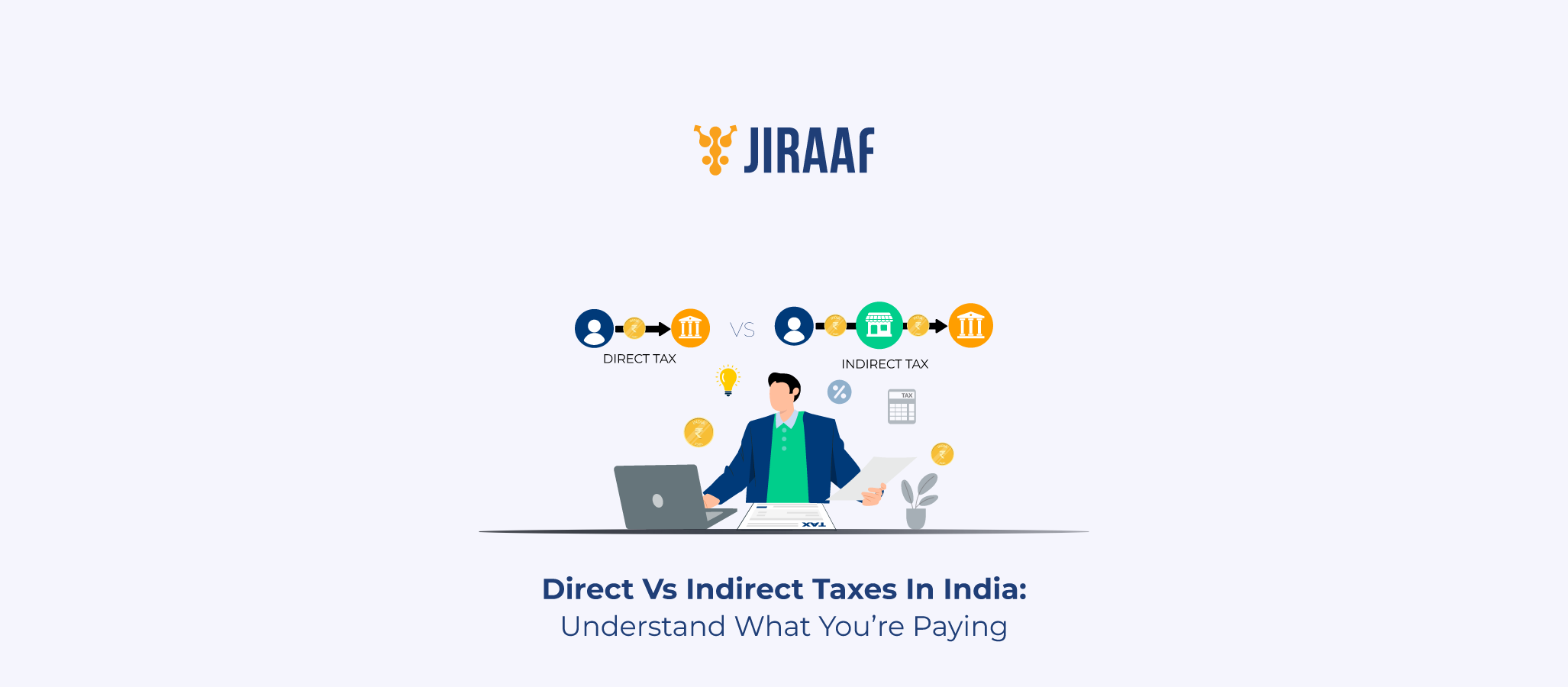Every year, countless taxpayers end up overpaying taxes, sometimes knowingly, often without knowing it. This can happen for several reasons, like maybe too much TDS was deducted, you changed jobs mid-year and didn’t consolidate income properly, or you made tax-saving investments but forgot to declare them. Whatever the reason, if you’ve paid more tax than necessary, you’re owed that money back. But here’s the catch: the refund doesn’t come to you automatically. You have to file for it. Otherwise, your hard-earned money stays stuck with the tax department, instead of returning to your account where it belongs.
So, it makes sense to claim an income tax refund if you’re eligible for it, right? But many skip it due to confusion over the process or fear of triggering scrutiny. However, the process is much simpler now and more transparent than ever, thanks to India’s integrated digital tax system. Whether you’re a salaried employee, freelancer, or business owner, this guide will help you reclaim what’s yours quickly, correctly, and with confidence.
Let’s break down everything you need to know to claim your income tax refund in India.
What is an Income Tax Refund?
If the income tax department of India has overcharged you for taxes, either due to paying excess TDS, advance tax, or incorrect self-assessment of taxes, you can file for and receive the excess tax back. This is called an income tax refund.
It’s a formal settlement of your tax account. For example, if ₹50,000 was deducted as TDS during the year but your final tax liability is only ₹30,000, you are entitled to a refund of ₹20,000.
Who Can Claim an Income Tax Refund?
Anyone who has paid more tax than necessary can claim a refund. This includes, but is not limited to:
- Salaried individuals whose employers deducted excess TDS.
- Freelancers and consultants who paid advance tax based on higher income estimates.
- Investors who had TDS deducted on interest income, even though their total income is below the taxable limit.
- NRIs who faced TDS deductions but qualified for deductions or exemptions under the Double Taxation Avoidance Agreement (DTAA).
- Senior citizens who are not liable to pay advance tax but have had TDS deducted from their FD or pension income.
- If you have underreported investments that offer tax benefits
Refunds can also arise due to clerical errors, incorrect tax calculations, or failure to claim deductions while filing.
When Can You Claim a Tax Refund?
You can claim a refund only after filing your ITR, and only if you declare all income sources and deductions correctly. Refund claims are tied to the assessment of your ITR, not your Form 16 or bank statements.
For most individuals, refunds are relevant when:
- TDS is deducted on income below the basic exemption limit
- You change jobs, and your total tax liability is miscalculated
- You miss reporting tax-saving investments to your employer
- You’ve paid advance or self-assessment tax based on a higher projected income
Note: Financial institutions deduct TDS on FDs or bonds, irrespective of your total income.
Filing for returns before the deadline increases your chances of faster refund processing. Note that for the assessment year 2025-26, the due date for filing ITR for non-tax audit cases has been extended from July 31, 2025, to September 15, 2025. This extension allows more time to file accurately and can result in higher interest payouts on refunds under Section 244A of the Income Tax Act.
Final Checklist Before Filing for Refund
Before claiming your refund, ensure that:
- All your income sources are accurately reported, from salary and rental income to capital gains and interest.
- Deductions under sections 80C, 80D, 24(b), and others are properly claimed.
- Form 26AS matches your TDS and tax payment details.
- Your bank account is pre-validated on the income tax portal with the correct IFSC and account number.
- You’ve e-verified your return; filing alone doesn’t trigger refund processing.
Neglecting even one of these can result in processing delays or rejection.
How to Claim Income Tax Refund Online: Step-by-Step Process
Claiming a refund is simpler than ever. Here’s how to do it in a few easy steps.
Step 1: Log in to the Income Tax Portal
Visit https://www.incometax.gov.in and log in using your Permanent Account Number (PAN), password, and captcha code.
Step 2: File Your ITR
Choose the correct ITR form (ITR-1 for salaried individuals is most common). Enter all details of your income, deductions, and taxes paid. Lastly, ensure Form 26AS matches the TDS claimed in your return.
Step 3: Claim the Refund
The system automatically calculates any refund due once you’ve filled in all the details. You don’t need to apply for it separately; just verify that the refund amount is reflected in the final computation.
Step 4: E-Verify Your Return
Use one of the following methods:
- OTP on Aadhaar-linked mobile number
- Net banking
- Electronic Verification Code (EVC)
- Sending a signed ITR-V to CPC, Bengaluru
Without verification, your return won’t be processed, and your refund won’t be initiated.
How to Claim Refund for Previous Years
In case you missed claiming a refund for a previous year, you can still file a belated return if you’re within the deadline. As per current rules:
- A belated ITR can be filed before December 31 of the assessment year (for FY 2024–25, you can file till Dec 31, 2025).
- For older years, a refund claim requires filing an application under Section 119(2)(b) with the jurisdictional Principal Commissioner of Income Tax.
This process is discretionary and typically allowed only under genuine hardship, supported by proper documentation. Refunds beyond six assessment years are usually not entertained unless directed by CBDT in exceptional cases.
Time Limit for Claiming Income Tax Refund
The refund claim window depends on how you file. Here is a list with the timelines:
- Regular ITRs: Refunds must be claimed within the due date, generally July 31 (extended to September 15, 2025, for AY 2025-26).
- Belated Returns: These can be filed until December 31 of the relevant assessment year.
- Condonation Requests: In special cases, if you miss the deadline, you can apply for a refund under Section 119(2)(b). Such requests may be considered by the income tax authorities if filed within six years from the end of the relevant assessment year.
Beyond that, refunds lapse and cannot be claimed. It’s critical to file your return on time, even if you don’t owe tax, if you’re expecting a refund.
How to Track Your Refund Status
After filing and verifying your return, you can track your refund via
The Income Tax Portal:
- Log in to incometax.gov.in
- Go to ‘e-File’ > ‘Income Tax Returns’ > ‘View Filed Returns’
- Check your ITR status and refund issue status
The NSDL Website:
- Enter your PAN and select the assessment year
- Click on submit to see the status
If it says, “Refund Sent,” check your bank account. If it says, “Refund Failed,” revisit your ITR and update your bank details.
Common Reasons for Refund Delays or Rejections
A few minor errors can hold up your refund for weeks (or months):
- Bank Account Not Validated: Your bank account must be pre-validated and linked with your PAN
- Return Not Verified: If you haven’t e-verified your return, your refund won’t be processed
- Mismatch in TDS or Form 26AS: If your employer or deductor hasn’t deposited TDS correctly, the system won’t acknowledge it
- Wrong IFSC or account number: One incorrect digit, and your refund might bounce back
Statuses you may see include:
- Refund Issued (credited to your bank)
- Refund Failure (due to bank mismatch)
- Under Processing
- No Demand, No Refund
- Refund Adjusted Against Outstanding Demand
Make sure your bank details are accurate, and your return has been e-verified for timely processing.
What to Do If You Don’t Receive Your Refund
Even if you have filed for a refund, there are still chances you might not receive your refund. If your refund hasn’t arrived within a reasonable time, here’s what you can do:
Step 1: Check the Status
Use the tax portal or NSDL site to confirm whether the refund was processed, rejected, or failed.
Step 2: Raise a Refund Reissue Request
If it was rejected or returned due to incorrect bank details, go to
Services > Refund Reissue in your e-filing portal dashboard.
Step 3: Contact CPC
If there’s no update or if the refund is delayed for over 3 months, reach out to the Central Processing Center (CPC) via:
- Toll-Free: 1800-103-0025
- Email: [email protected]
Step 4: File a Grievance
If you still receive no response, you can raise a grievance on the e-Nivaran portal under your income tax account.
Final Thoughts: Maximize What You’re Owed
Filing your taxes is one thing, getting your refund is another. A tax refund isn’t a bonus; it’s your hard-earned money coming back to you. And with the government moving towards faceless, tech-driven assessments, claiming it is no longer a bureaucratic hassle. But the onus is still on you to get your numbers right, file on time, and follow through with the process.
If you’ve overpaid your taxes, don’t wait. File your return accurately, track your status, and recover what’s yours. With a little diligence, your refund won’t just be a possibility, it’ll be a certainty.
Discover fixed income investments with Jiraaf, a SEBI registered online bonds platform that educates and brings access to a wide array of bonds. Sign up today to explore diversified fixed income investment opportunities to support your goal-based wealth creation journey. Start investing!



